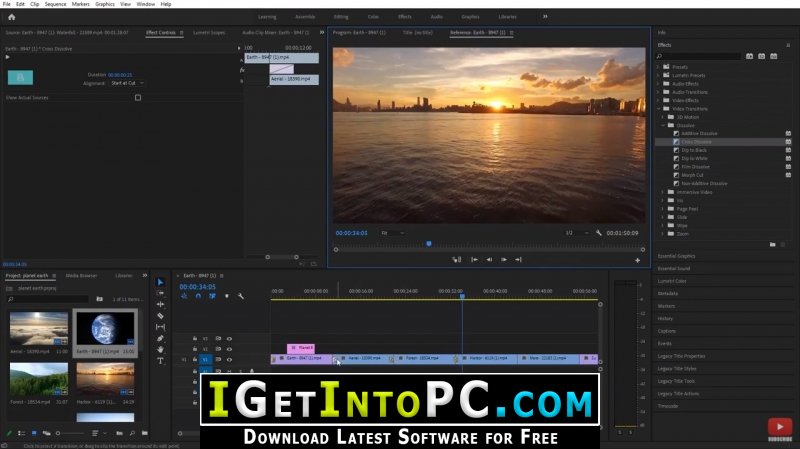

This is because the entire sequence transcript is loaded into the Text window when a sequence is opened. This is another very useful feature.Īnother beneficial v22 change is that you can search for text across all clips or all captions in a transcribed sequence. These can be opened in Excel, Numbers, or any program that accepts CSV files. This puts every element into it’s own spreadsheet cell.
#Premiere pro 2021 update
This was a much needed improvement from the initial release.Īnother new feature in the v22 update is the ability to export transcripts as CSV files. This makes these transcripts perfect for client review and editing your talking heads on paper before you start moving clips. The big news with the v22 update is that exporting a transcript as a text file now includes both the timecode reference and the speaker’s name.

This is very useful to know where you’ll probably need B-roll. NOTE: Select Display pauses as to display pauses as ellipses so that the transcript shows where there are gaps in the dialog. txt file for proof-reading, to share with a client, or to create written content for your video. NOTE: Use Import Transcript from this same menu to import a transcript that was exported from another Premiere system.Įxport to Text File. Use this when moving the transcript from one Premiere system to another. prtranscript file that can be opened in the Transcript panel using the Import transcript option. The v22 release now provides three export choices:Īll three export options display a Save dialog so you can name the file and give it a storage location.Įxport Transcript is used to create a. When the time comes to do something with that transcript, click the three dots at the top right of the Text window to reveal the export menu. NOTE: Currently, Adobe tends to put the period at the end of a sentence at the start to the next paragraph. To edit a transcript, say to change a word, correct a spelling or add punctuation, click the paragraph you want to change and, like any text editor, edit it. To change the speaker associated with a paragraph of the transcript, click the speaker name and pick the correct name from the list. It now expands as you add new speakers, making them easier to see. Adobe changed the behavior of this window. To add an additional speaker, click the Add Speaker button. To edit a name, click the pencil and type the new name. NOTE: Don’t add a new speaker, otherwise you’ll need to change all the existing speaker names manually.

To change the name of the default speaker, click *** Unknown and select Edit Speakers. As well, Premiere displays screens indicating the transcription process.Īfter a bit, which varies depending upon the length of the clip, the transcript appears. Premiere extracts the audio from the sequence and sends it to the Cloud for transcription. Then click the blue Transcribe button to start the process.


 0 kommentar(er)
0 kommentar(er)
